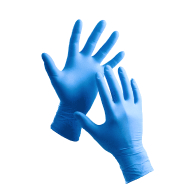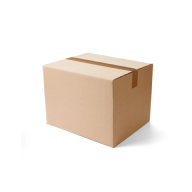Uvex Rubiflex NB35S Safety Gloves
Product description
The Uvex rubiflex chemical protection gloves feature a thick cotton interlock lining combined with a fully-coated nitrile rubber exterior for superior chemical and mechanical protection. The 0.50mm coating thickness provides excellent resistance against various chemicals while maintaining tactile sensitivity. These gauntlet-style gloves extend 35cm up the arm and are available in longer versions with elasticated ends for enhanced protection.
Product Features:
- Ergonomic fit for comfortable wear
- Enhanced grip performance
- Superior tactile sensitivity
- Thick cotton interlock lining
- Fully coated nitrile rubber construction
Technical Details:
- Coating thickness: 0.50 mm
- Gauntlet-style design
- 35 cm length
- Performance rating EN 388: 2121X
- Performance rating EN 407: X1XXXX
Chemical Resistance:
- n-Heptane (J)
- Sodium hydroxide 40% (K)
- Acetic acid 99% (N)
- Ammonia water 25% (O)
- Hydrogen peroxide 30% (P)
- Formaldehyde 37% (T)
Standards:
- EN ISO 21420:2020
- EN 388:2016 + A1:2018
- EN ISO 374-1:2016 + A1:2018
- EN 407:2020
Suited for various tasks, these gloves offer essential protection and flexibility. A practical choice providing comfort and durability for everyday use.
Offers enhanced forearm coverage, protecting against splashes and contaminants. Ideal for tasks requiring greater protection beyond the wrist area.
Provides complete hand coverage, shielding fingers from hazards. Offers maximum protection and warmth, ideal for demanding tasks and environments.
Measures how far the glove extends up the arm, determining protection coverage. Longer lengths shield forearms from chemicals, heat, and other workplace hazards.
Identifies the primary substances used in glove construction that determine protection level, comfort, grip strength, and resistance to specific workplace hazards.
Indicates the extent of protective coating applied to the glove, affecting grip strength, liquid resistance, durability, and task-specific dexterity.
The interior fabric that contacts your skin, affecting comfort, temperature regulation, moisture control, and allergen exposure during extended wear periods.
The design of the wrist area that secures the glove and prevents debris entry. Different styles offer varying levels of adjustability, protection, and comfort.
The visual appearance that enhances workplace safety through visibility, identification, and hazard awareness while allowing for team differentiation and brand recognition.
- Chemical Resistance
- Cut Resistant
- Heat & Flame Resistance
- Hand Protection
Request a free sample
Test first and buy later. Visit any product page to request your free sample.
Standards and labels
Test results
General Requirements GuideEN ISO 21420:2020 is a standard that outlines general requirements and guidelines for protective gloves, aiming to ensure their quality, performance, and suitability for various applications. When a product meets the requirements outlined in the General Requirements section of EN ISO 21420:2020, it signifies that the gloves comply with fundamental quality and performance criteria, including factors such as size, fit, ergonomics, and dexterity. The practical implications of this compliance are significant, as it assures users of the gloves' basic functionality and suitability for general hand protection purposes across a range of industries and applications. The test method involves evaluating various aspects of the gloves, including dimensions, construction, materials, and labeling, to ensure conformity with the specified requirements. Compliance with these general requirements enhances user confidence in the protective gloves' reliability and effectiveness, promoting workplace safety and facilitating compliance with regulatory standards.
EN ISO 374-1:2016 is a standard that defines the performance requirements for gloves that protect against chemicals and microorganisms. The standard specifies the design, materials, and testing requirements for gloves to protect against chemicals and microorganisms. Possible test results include measurements of the gloves' permeation resistance, degradation, and penetration. It also includes the safety and functionality requirements for gloves.
Test results
Specified Requirements Type AEN 388:2016 is a European standard for measuring the performance of protective gloves against mechanical risks (abrasion, cut, tear, and puncture). The standard includes test methods and performance requirements for gloves to be considered compliant. Test results are reported using a series of four numbers, each representing the performance level achieved in one of the tests.
Test results
Cut Resistance, ISO 13997 Level XThe standard EN 388:2016, specifically its segment referring to ISO 13997 test, is designed to assess the cut resistance of materials used in protective gloves. A result denoted as 'Level X' means that test is not performed and the cut resistance of the product cannot be guaranteed.
Cut Resistance, Coup Test Level 1The EN 388:2016 standard is dedicated to gauging the mechanical risks for hand protection where a Cut Resistance, Coup Test Level 1 indicates minimal resistance to cutting because material achieved between 1.2 and 2.5 cycles before being cut through during the test. It means that the product tested at this level offers basic protection against shallow cuts, suitable for tasks with low risk of cut injuries. The test method used involves a rotating circular blade under a fixed force making contact with the fabric or material being tested. The blade moves back and forth across the material until a cut-through is achieved. The number of cycles required to cut through the sample at a consistent speed determines the cut resistance, with Level 1 being the second lowest rating after level 0. Products at this level are applicable in scenarios where there are minimal hazards from sharp objects, hence ideal for light duties where there is no significant risk of deep cuts.
Abrasion Resistance Level 2EN 388:2016 is an updated European standard that specifies criteria for testing gloves to protect against mechanical risks, including abrasion, cuts, tears, and puncture. The Abrasion Resistance Level 2 classification within this standard indicates a moderate level of protection against wear from rough materials. The abrasion resistance test involves subjecting the glove material to repeated cycles of sandpaper under pressure until the material wears through. Level 2 abrasion resistance means the gloves can withstand between 500 to 1999 cycles before being penetrated. This level of protection is suitable for tasks that involve handling or coming into contact with abrasive materials but not at an extreme or heavy-duty level. Gloves with Level 2 abrasion resistance are well-suited for general handling tasks, offering durability and protection to extend the life of the glove while maintaining good dexterity and comfort.
Tear Resistance Level 2EN 388:2016 is a European standard that sets criteria for testing the mechanical risks for protective gloves, including abrasion, cut, tear, and puncture resistance. The Tear Resistance Level 2 designation indicates that the gloves have a moderate level of resistance to tearing. The test for tear resistance involves subjecting a sample of the glove material to a force until it tears, and the force required to initiate and propagate the tear is measured. Gloves that achieve Level 2 tear resistance can withstand between 25 to 50 Newtons of force. This level of tear resistance is suitable for tasks where gloves might face moderate stresses that could cause tearing, such as general handling and light industrial work where sharp or jagged materials are handled less frequently. These gloves provide reliable protection and durability in scenarios where some degree of mechanical risk is present but not excessively severe.
Puncture Resistance Level 1The European standard EN 388:2016 addresses the puncture resistance of protective gloves, with puncture resistance classified from Levels 1 to 4. Specifically, a Level 1 result indicates minimal puncture resistance. This level of resistance is determined by a test involving a standardized stylus with a specified diameter and force. During the test, the stylus is pressed against the material with a force up to 20 Newtons to assess how well the glove can withstand penetration. A Level 1 rating signifies that the glove provides basic protection against small punctures or stabs, appropriate for areas with minimal risk. Practical implications for this test result suggest the gloves are suitable for light tasks where major risks of punctures are not anticipated, but are not adequate for handling sharp tools or heavy equipment where higher penetration resistance would be necessary.
EN 407:2020 is a European standard that specifies the safety requirements for protective gloves for thermal risks. It sets rules for the design, construction, and testing of gloves that protect users from heat and fire. Testing includes measurements of contact heat, convective heat, radiant heat, small splashes of molten metal, and flame resistance. The standard also includes requirements for labeling and instructions for use. This standard is an updated version of EN 407:2004, it includes new requirements, testing methods and performance levels to ensure that the gloves provide better protection against thermal risks such as heat, fire and molten metal splash.
Test results
Metal Splash Resistance Level XThe EN 407:2020 standard specifies different levels of protection for gloves against thermal risks, including metal splash resistance. A result marked as 'Level X' under this standard symbolizes that the glove material either did not meet the minimum requirements for testing or that no specific test was conducted for this hazard. The test for Metal Splash Resistance in EN 407:2004 involves exposing the glove material to molten metal splashes to determine how much molten metal is required to heat the glove material to a degree that it would cause risks to the wearer. The practical implication of a 'Level X' rating is that gloves marked as such should not be relied upon for protection against risks of molten metal splashes, making them unsuitable for use in environments where exposure to this hazard is likely.
Heat Contact Level 1EN 407:2020 sets the standard for evaluating the performance of protective gloves against thermal risks. A result of Level 1 for Heat Contact indicates minimal protection, where the glove material can delay the transfer of heat from a surface at 100°C for at least 15 seconds. This test result is established through method EN ISO 12127-1, where a glove sample is exposed to a hot surface at a specified temperature and the time is measured until the glove's interior temperature rises by a certain degree. For procurement professionals, a Level 1 rating suggests suitability for environments with low heat risks, providing brief contact protection that can be crucial for tasks involving occasional, quick contact with warm objects without continuous exposure to high heat.
Radiant Heat Level XEN 407:2020 is a European standard that sets the requirements for protective gloves to defend against various thermal hazards, including radiant heat. The designation Radiant Heat Level X indicates that the gloves have not been tested for this specific type of protection, or they did not meet the minimum criteria established by the standard for resisting radiant heat. This means that these gloves are not certified for protection against radiant heat, which involves the transmission of heat through infrared rays from a heat source without direct contact. The lack of a specific radiant heat protection level suggests that users should not rely on these gloves for tasks where significant exposure to radiant heat is expected. Instead, these gloves might be suitable for other types of thermal risks for which they are certified, ensuring users select the appropriate type of protective glove based on the specific hazards present in their working environment. This classification assists in preventing inappropriate glove use and enhancing worker safety by clearly indicating the limitations of the glove's protective capabilities.
Molten Metal Resistance Level XEN 407:2020 is a European standard that provides specifications for protective gloves to safeguard against thermal risks, including the exposure to molten metals. The designation Molten Metal Resistance Level X indicates that the gloves have not been tested for this specific risk, or they failed to meet the minimum requirements set out in the standard for protection against molten metal splashes. This means that the gloves are either unsuitable for use in environments where there is a risk of contact with molten metals, or additional testing is required to determine their suitability. Typically, such a classification implies that the gloves should not be used for handling molten metals and should only be considered for other types of thermal risks specified in the standard, where molten metal exposure is not a concern. This classification helps in ensuring that users select the right type of glove based on the specific hazards present in their working environment, thereby preventing inappropriate use and enhancing safety.
Burning Behaviour Level XThe EN 407:2020 standard's specified test result Level X for Burning Behaviour indicates that either the test was not conducted or the sample was not applicable for testing under this specific parameter. Consequently, no performance level can be assigned according the criteria set in the standard. This finding is part of a broader testing protocol where Thermal Hazards Protection levels are determined for materials, especially used in gloves intended for heat handling. The test method evaluates the material’s ability to resist catching fire and its rate of burning. To assess burning behavior, the sample is exposed to a small flame, and observations are made on whether it ignites, how long it burns after the flame is removed, and how it extinguishes. Practical implications for products that receive a Level X for Burning Behaviour could include uncertainty in performance when faced with thermal hazards, thus impacting their suitability for jobs involving high temperatures or direct contact with flames.
Heat Contact Level XThe EN 407:2020 standard regarding Heat Contact result Level X specifies test results for protection against thermal hazards like heat contact for protective gloves. A Level X result indicates that the product has not been tested for this specific protection characteristic or that the result did not meet the minimum requirements established by the standard. The test method used to determine heat contact resistance involves applying a certain level of heat to the glove material and measuring the length of time it takes for the inside of the glove to increase in temperature by a certain degree. In practical terms, a Level X in heat contact means that the gloves may not provide significant protection against prolonged or significant contact with heated materials, making them unsuitable for certain operations involving high-heat exposure.
CE Marking is a label that shows a product meets certain safety and environmental standards set by the European Union. To get the CE Marking, a company must test and certify their product meets these standards. CE Marking is required for many products sold in the EU, including electronics, machinery, toys and medical devices. It helps ensure that products are safe for consumers and the environment, and allows for easy trade within the EU.
Oeko-Tex Standard 100 is a product certification program for textiles, which is awarded by the Oeko-Tex Association. This program verifies that the textile products are free from harmful chemicals. To be able to use the Oeko-Tex Standard 100 label, a product must meet certain requirements set by the Oeko-Tex Association which include limits on the levels of harmful substances such as pesticides, heavy metals, and formaldehyde. The textile products are inspected and certified by Oeko-Tex, they can use the Oeko-Tex Standard 100 label on their packaging to show that they are free from harmful chemicals. This certification is for all types of textiles, from raw materials to finished products, and it is globally recognized.
Uvex delivery terms
Free delivery when you order more than 1 650,00 kr from Uvex
Supplier shipping fee 60,00 kr
Brand minimum 0,00 kr
115,17 kr
Shipping fee is 60,00 kr for orders under 1 650,00 kr
Sold in units of one pair
Need larger quantities?
Other products you may like
Recently viewed
Need help?
Get help from our experts
Other products you may like
Similar products you may like
Recommended for you
Uvex
Delivery time: 4 business days
Supplier shipping fee 60,00 €
Free shipping on orders over 1 650,00 €



Find +150,000 products from hundreds of brands
Autonomous sourcing platform
The most efficient way to source and order supplies for your operations
Sourcing
Ordering
List products you’re looking for and we’ll find the best products and prices for you – all for free.
Need help?
Get help from our experts


